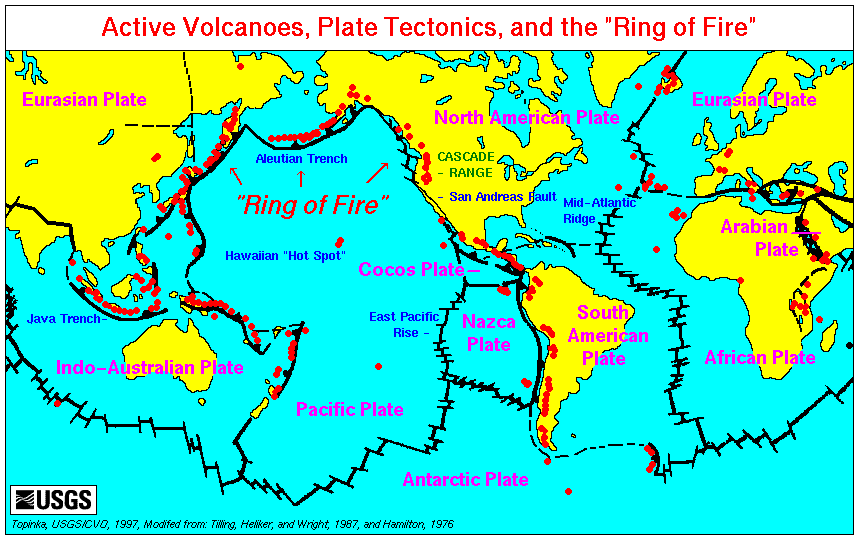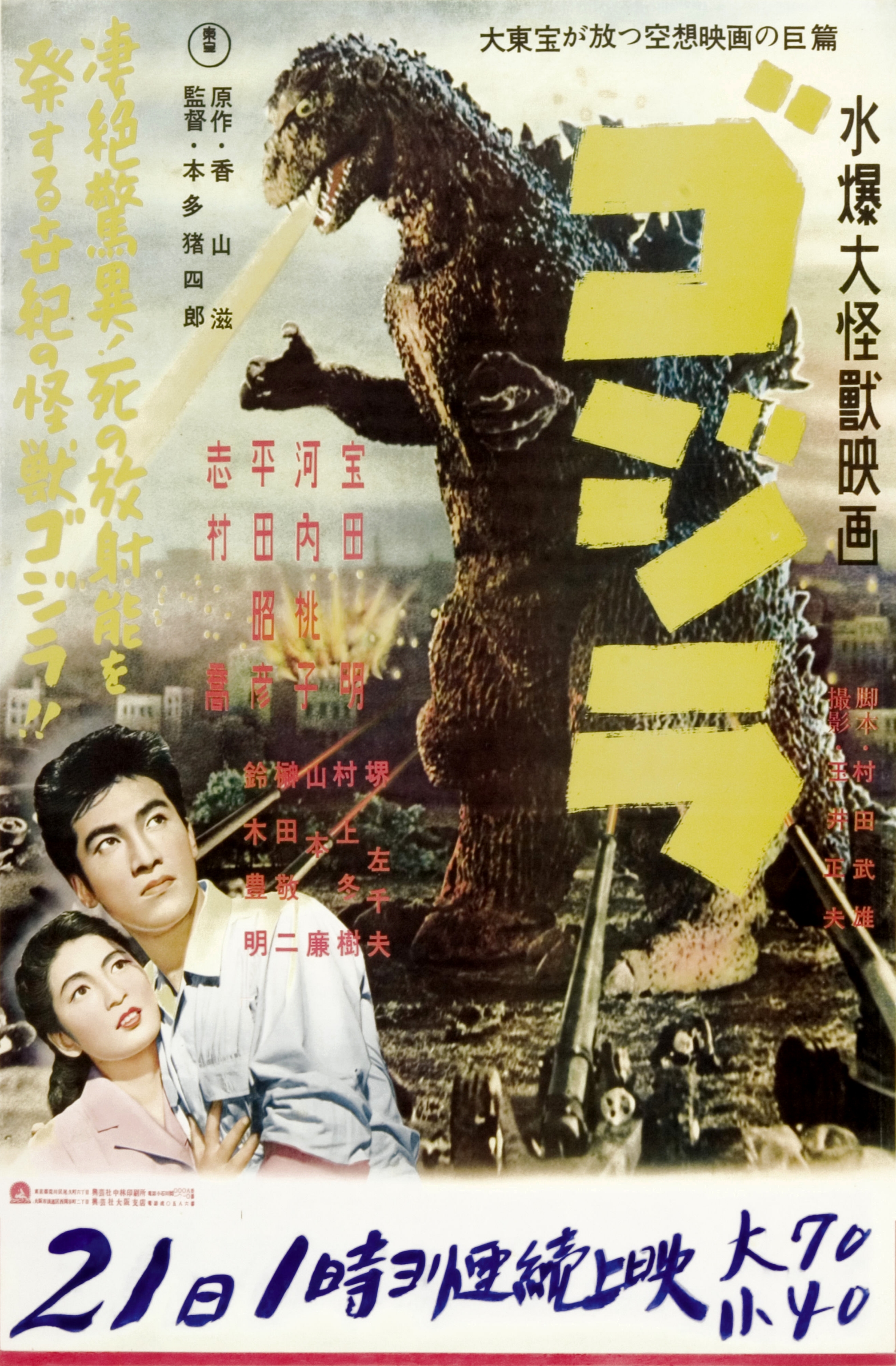|
Mount Mihara
is an active volcano on the Japanese isle of Izu Ōshima. Although the volcano is predominantly basaltic, major eruptions have occurred at intervals of 100–150 years. History Mount Mihara's major eruption in 1986 saw lava fountains up to high. The eruption had a Volcanic Explosivity Index of 3, and involved a central vent eruption, radial fissure eruption, explosive eruption, lava flows, and a lava lake eruption. There was also a 16 km high subplinian plume. All of the island's 12,000 inhabitants were evacuated by dozens of military and civilian volunteer vessels. The most recent eruption was in 1990. Tourism Mount Mihara is a popular tourist destination. The volcano's low height and gentle slopes makes it suitable for hiking; walking to the volcano's summit on foot takes around an hour, and offers views of Mount Fuji. Suicide From a vantage point near the top of the cone it was once possible to leap into the crater. As a result, the volcano became a popular ven ... [...More Info...] [...Related Items...] OR: [Wikipedia] [Google] [Baidu] [Amazon] |
Volcano
A volcano is commonly defined as a vent or fissure in the crust of a planetary-mass object, such as Earth, that allows hot lava, volcanic ash, and gases to escape from a magma chamber below the surface. On Earth, volcanoes are most often found where tectonic plates are diverging or converging, and because most of Earth's plate boundaries are underwater, most volcanoes are found underwater. For example, a mid-ocean ridge, such as the Mid-Atlantic Ridge, has volcanoes caused by divergent tectonic plates whereas the Pacific Ring of Fire has volcanoes caused by convergent tectonic plates. Volcanoes resulting from divergent tectonic activity are usually non-explosive whereas those resulting from convergent tectonic activity cause violent eruptions."Mid-ocean ridge tectonics, volcanism and geomorphology." Geology 26, no. 455 (2001): 458. https://macdonald.faculty.geol.ucsb.edu/papers/Macdonald%20Mid-Ocean%20Ridge%20Tectonics.pdf Volcanoes can also form where there is str ... [...More Info...] [...Related Items...] OR: [Wikipedia] [Google] [Baidu] [Amazon] |
Associated Press
The Associated Press (AP) is an American not-for-profit organization, not-for-profit news agency headquartered in New York City. Founded in 1846, it operates as a cooperative, unincorporated association, and produces news reports that are distributed to its members, major U.S. daily newspapers and radio and television broadcasters. Since the award was established in 1917, the AP has earned 59 Pulitzer Prizes, including 36 for photography. The AP is also known for its widely used ''AP Stylebook'', its AP polls tracking National Collegiate Athletic Association, NCAA sports, sponsoring the National Football League's annual awards, and its election polls and results during Elections in the United States, US elections. By 2016, news collected by the AP was published and republished by more than 1,300 newspapers and broadcasters. The AP operates 235 news bureaus in 94 countries, and publishes in English, Spanish, and Arabic. It also operates the AP Radio Network, which provides twice ... [...More Info...] [...Related Items...] OR: [Wikipedia] [Google] [Baidu] [Amazon] |
Active Volcanoes
An active volcano is a volcano that is currently erupting, or has the potential to erupt in the future. Conventionally it is applied to any that have erupted during the Holocene (the current geologic epoch that began approximately 11,700 years ago). A volcano that is not currently erupting but could erupt in the future is known as a dormant volcano. Volcanoes that will not erupt again are known as extinct volcanoes. Overview There are 1,350 potentially active volcanoes around the world, 500 of which have erupted in historical time. Many active volcanoes are located along the Pacific Rim, also known as the Pacific Ring of Fire. An estimated 500 million people live near active volcanoes. ''Historical time'' (or recorded history) is another timeframe for ''active''. The span of recorded history differs from region to region. In China and the Mediterranean, it reaches back nearly 3,000 years, but in the Pacific Northwest of the United States and Canada, it reaches back less tha ... [...More Info...] [...Related Items...] OR: [Wikipedia] [Google] [Baidu] [Amazon] |
Stratovolcanoes Of Japan
A stratovolcano, also known as a composite volcano, is a typically conical volcano built up by many alternating layers (strata) of hardened lava and tephra. Unlike shield volcanoes, stratovolcanoes are characterized by a steep profile with a summit crater and explosive eruptions. Some have collapsed summit craters called calderas. The lava flowing from stratovolcanoes typically cools and solidifies before spreading far, due to high viscosity. The magma forming this lava is often felsic, having high to intermediate levels of silica (as in rhyolite, dacite, or andesite), with lesser amounts of less viscous mafic magma. Extensive felsic lava flows are uncommon, but can travel as far as 8 km (5 mi). The term ''composite volcano'' is used because strata are usually mixed and uneven instead of neat layers. They are among the most common types of volcanoes; more than 700 stratovolcanoes have erupted lava during the Holocene Epoch (the last 11,700 years), and many older, no ... [...More Info...] [...Related Items...] OR: [Wikipedia] [Google] [Baidu] [Amazon] |
Mountains Of Tokyo
A mountain is an elevated portion of the Earth's crust, generally with steep sides that show significant exposed bedrock. Although definitions vary, a mountain may differ from a plateau in having a limited summit area, and is usually higher than a hill, typically rising at least above the surrounding land. A few mountains are isolated summits, but most occur in mountain ranges. Mountains are formed through tectonic forces, erosion, or volcanism, which act on time scales of up to tens of millions of years. Once mountain building ceases, mountains are slowly leveled through the action of weathering, through slumping and other forms of mass wasting, as well as through erosion by rivers and glaciers. High elevations on mountains produce colder climates than at sea level at similar latitude. These colder climates strongly affect the ecosystems of mountains: different elevations have different plants and animals. Because of the less hospitable terrain and climate, mountains t ... [...More Info...] [...Related Items...] OR: [Wikipedia] [Google] [Baidu] [Amazon] |
Sadako Yamamura
is a fictional character and the main antagonist of Koji Suzuki's ''Ring'' novel series and its eponymous film series. Her backstory varies between continuities, but all depict her as the vengeful ghost of a young psychic who was murdered and thrown into a well. As a ghost, she is dressed in a simple white dress with long black hair hiding her face, and uses , her most distinctive power, to create a cursed videotape; whoever watches the tape will be haunted by Sadako and die exactly one week later unless the tape is copied and shown to another person, who must then repeat the same process. The titular "ring" from the novels and films refers to a ring-like visual that appears on the cursed videotape, which actually depicts the top of the well as seen by Sadako from its bottom. Korean and American films reimagine the character as Park Eun-seo () and Samara Morgan respectively, with similar backgrounds and features. Sadako has been played by a number of actresses in films, includi ... [...More Info...] [...Related Items...] OR: [Wikipedia] [Google] [Baidu] [Amazon] |
Ring (film)
is a 1998 Japanese supernatural psychological horror film directed by Hideo Nakata and written by Hiroshi Takahashi, based on the 1991 novel by Koji Suzuki. The film stars Nanako Matsushima, Miki Nakatani, and Hiroyuki Sanada, and follows a reporter who is racing to investigate the mystery behind a cursed video tape; whoever watches the tape dies seven days after doing so. The film is also titled ''The Ring'' (stylized as ''the Ring'') in Japan and was released in North America as ''Ringu''. Production took approximately nine months, and the film was shot back-to-back with a sequel, ''Spiral'', featuring much of the same cast but involving neither Nakata or Takahashi; both films were released together in Japan on January 31, 1998, with the studio hoping for the popularity of the novel to make both films successful. After its release, ''Ring'' was a box office hit in Japan and internationally and was acclaimed by critics, who praised its atmosphere, slow-paced horror and themes ... [...More Info...] [...Related Items...] OR: [Wikipedia] [Google] [Baidu] [Amazon] |
Ring (Suzuki Novel)
is a Japanese horror, Japanese mystery horror novel by Koji Suzuki first published in 1991, and set in modern-day Japan. The novel was the first in the Ring (novel series), ''Ring'' novel series, and the first of a trilogy, along with two sequels: ''Spiral (Suzuki novel), Spiral'' (1995) and ''Loop (novel), Loop'' (1998). The original ''Ring'' novel sold 500,000 copies by January 1998, and 1.5million copies by July 2000. ''Ring'' was the basis for the The Ring (franchise), ''Ring'' franchise, including a 1995 television film (''Ring (1995 film), Ring: Kanzenban''), a 1998 theatrical film of the same name (''Ring (film), Ring''), a television series (''Ring: The Final Chapter''), and two international film remakes of the 1998 film: a South Korean version (''The Ring Virus'') and an English-language version (''The Ring (2002 film), The Ring''). Plot After finding out three teenagers died at the same time and in the same bizarre manner as his niece, reporter Kazuyuki Asakawa of ... [...More Info...] [...Related Items...] OR: [Wikipedia] [Google] [Baidu] [Amazon] |
Godzilla Vs
is a fictional monster, or ''kaiju'', that debuted in the Godzilla (1954 film), eponymous 1954 film, directed and co-written by Ishirō Honda. The character has since become an international Godzilla in popular culture, pop culture icon, appearing in Godzilla (franchise), various media: 33 Japanese films produced by Toho, Toho Co., Ltd., Godzilla (franchise)#American films, five American films, and numerous List of Godzilla games, video games, novels, Godzilla (comics), comic books, and Godzilla (franchise)#Television, television shows. Godzilla has been dubbed the King of the Monsters, an epithet first used in ''Godzilla, King of the Monsters!'' (1956), the American localization of the 1954 film. Originally and in most iterations of the creature, Godzilla is a colossal Mesozoic, prehistoric reptilian or dinosaurian monster that is Semiaquatic, amphibious or resides partially in the ocean, awakened and empowered after many years by exposure to Radioactive decay, nuclear ra ... [...More Info...] [...Related Items...] OR: [Wikipedia] [Google] [Baidu] [Amazon] |
The Return Of Godzilla
, is a 1984 Japanese ''kaiju'' film directed by Koji Hashimoto, with special effects by Teruyoshi Nakano. Distributed by Toho and produced under their subsidiary Toho Pictures, it is the 16th film in the ''Godzilla'' franchise, the last film produced in the Shōwa era, and the first film in the Heisei series. ''The Return of Godzilla'' stars Ken Tanaka, Yasuko Sawaguchi, Yosuke Natsuki, and Keiju Kobayashi, with Kenpachiro Satsuma as Godzilla. The film serves as both a sequel to the original 1954 film and a reboot of the franchise that ignores the events of every Shōwa era film aside from the original ''Godzilla'', placing itself in line with the darker tone and themes of the original film and returning Godzilla to his destructive, antagonistic roots. The film was released theatrically in Japan on December 15, 1984. Critics praised Godzilla's return, Koroku's score, themes, special effects and darker tone. The following year, a heavily-re-edited localized version, tit ... [...More Info...] [...Related Items...] OR: [Wikipedia] [Google] [Baidu] [Amazon] |
Kaiju
is a Japanese term that is commonly associated with media involving giant monsters. Its widespread contemporary use is credited to ''tokusatsu'' (special effects) director Eiji Tsuburaya and filmmaker Ishirō Honda, who popularized the ''kaiju'' film genre by creating the ''Godzilla (franchise), Godzilla'' franchise and its spin-offs. The term can also refer to the monsters themselves, which are usually depicted attacking major cities and battling either the military or other creatures. ''Godzilla (1954 film), Godzilla'' (1954) is often regarded as the first ''kaiju'' movie. When developing it, Honda and Tsuburaya drew inspiration from the character of King Kong, both in its influential King Kong (1933 film), 1933 film and in the conception of a giant monster, establishing it as a pivotal precursor in the evolution of the genre.King Kong’s influence on the giant monster genre: * * * * * * * * * * * * * * During their formative years, ''kaiju'' movies were generall ... [...More Info...] [...Related Items...] OR: [Wikipedia] [Google] [Baidu] [Amazon] |







